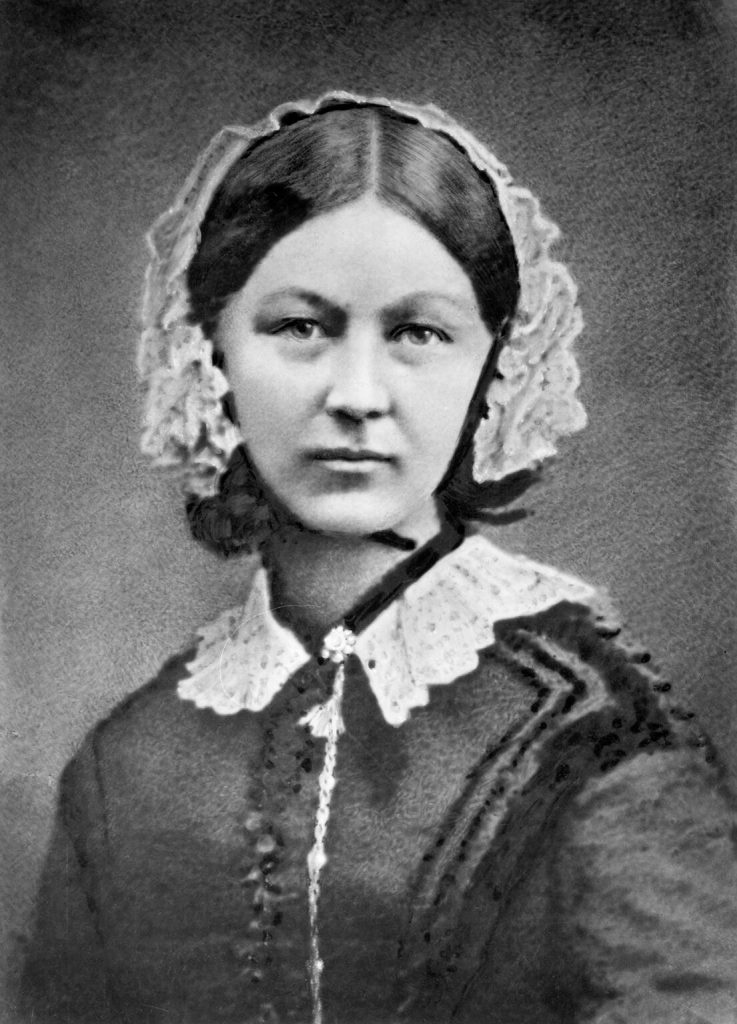1.2 History and Foundation
Open Resources for Nursing (Open RN)
Brief History of Nursing
Before discussing scope and standards of nursing care, it is helpful to briefly review a history of the nursing profession. The nursing tradition began during the 5th and 6th centuries as a charitable means of caring for the sick, feeding and clothing the hungry and the poor, and offering care to widows and orphans. As such, nursing’s earliest foundations were based on religious principles, with nuns often providing care. During the Middle Ages, medical and surgical treatments advanced, with formal training beginning for medical practitioners. Care of clients shifted from a religious perspective to a more medical perspective.[1]
In the mid-19th century, Florence Nightingale, answering a religious calling, was determined to enter the field of nursing, much to the chagrin of her family. At the time, nurses generally came from lower socioeconomic class families, and the focus of nursing was changing linens and performing other menial tasks in hospitals. Florence recognized a need for trained nurses, persisted in her calling, and ultimately helped lead nursing into a holistic, spiritual practice. Florence Nightingale is considered to be the founder of modern nursing practice.[2],[3] In 1860, Florence Nightingale established the first nursing school in the world and promoted the concept of nurses as a professional, educated workforce of caregivers for the sick.[4] See Figure 1.1[5] for a portrait of Florence Nightingale.
Florence Nightingale’s contributions to health care started during the Crimean War in 1854. Her team discovered that poor health care for wounded soldiers was being delivered by overworked medical staff in a dirty environment. Florence documented the mortality rate in the hospital and created statistical models that demonstrated that 600 out of every 1,000 injured soldiers died because of preventable communicable and infectious diseases. This statistical analysis was the early foundation of evidence-based practice that nurses use today. Florence’s nursing interventions were simple and focused on providing a clean environment, clean water, and good nutrition to promote healing. For example, she provided fruit as part of the care for the wounded soldiers to promote good nutrition and healing. With these simple actions, the mortality rate of the soldiers decreased from 60% to 2.2%.[6]
In 1859, Nightingale wrote a book titled Notes on Nursing that served as the cornerstone of the Nightingale School of Nursing curriculum. Nightingale believed in the importance of placing a patient in an environment that promoted healing where they could recover from disease. She promoted this knowledge as distinct from medical knowledge. Her emphasis on the value of the environment formed many of the foundational principles that are still used to promote healing in health care settings today. She also insisted on the importance of building trusting relationships with patients and believed in the therapeutic healing that resulted from nurses’ presence with patients. She promoted the concept of confidentiality, stating a nurse “should never answer questions about her sick except to those who have a right to ask them.”[7] These nursing concepts formed the foundation of nursing practice as we know it today.

Modern nursing has reinvented itself a number of times as health care has advanced and changed over the past 160 years. With more than four million members, the nursing profession represents the largest segment of the United States’ health care workforce. Nursing practice covers a broad continuum, including health promotion, disease prevention, coordination of care, and palliative care when cure is not possible. Nurses directly affect client care and provide the majority of client assessments, evaluations, and care in hospitals, nursing homes, clinics, schools, workplaces, and ambulatory settings. They are at the front lines in ensuring that client care is delivered safely, effectively, and compassionately. Additionally, nurses attend to patients and their families in a holistic way that often goes beyond physical health needs and recognize social, mental, emotional, and spiritual needs.[8]
- University of Pennsylvania. (n.d.). Barbara Bates center for the study of the history of Nursing. Penn Nursing: University of Pennsylvania. https://www.nursing.upenn.edu/history/ ↵
- Aravind, M., & Chung, K. C. (2010). Evidence-based medicine and hospital reform: Tracing origins back to Florence Nightingale. Plastic Reconstructive Surgery, 125(1), 403-409. https://doi.org/ 10.1097/PRS.0b013e3181c2bb89. ↵
- Murdarasi, K. (2020). The Christian faith of Florence Nightingale: The founder of Modern Nursing. Premier Christianity. https://www.premierchristianity.com/home/the-christian-faith-of-florence-nightingale-the-founder-of-modern-nursing/2827.article ↵
- Karimi, H., & Masoudi Alavi, N. (2015). Florence Nightingale: The mother of nursing. Nursing and Midwifery Studies, 4(2), e29475. https://www.ncbi.nlm.nih.gov/pmc/articles/PMC4557413/ ↵
- “Florence Nightingale (H Hering NPG x82368).jpg” by Henry Hering (1814-1893) is in the Public Domain ↵
- Karimi, H., & Masoudi Alavi, N. (2015). Florence Nightingale: The mother of nursing. Nursing and Midwifery Studies, 4(2), e29475. https://www.ncbi.nlm.nih.gov/pmc/articles/PMC4557413/ ↵
- Karimi, H., & Masoudi Alavi, N. (2015). Florence Nightingale: The mother of nursing. Nursing and Midwifery Studies, 4(2), e29475. https://www.ncbi.nlm.nih.gov/pmc/articles/PMC4557413/ ↵
- Institute of Medicine (US) Committee on the Robert Wood Johnson Foundation Initiative on the Future of Nursing, at the Institute of Medicine. (2011). The future of nursing: Leading change, advancing health. National Academies Press. https://www.ncbi.nlm.nih.gov/books/NBK209880/57413/ ↵

